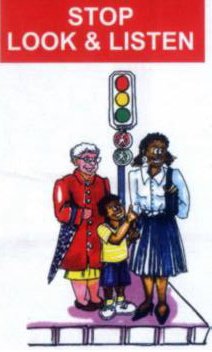Uncovering the Myths About the Transport Needs of the Elderly
THE transportation issues facing the elderly in modern society are not new. But as populations age and become incapable of transporting themselves, the inadequacies of most public transportation options will become all too apparent. There are compelling reasons to develop transportation alternatives for the elderly. Perhaps foremost is the public safety issue that emerges from an increasingly aging driver population. Age-related physical and cognitive deterioration, as well as the potential for interactions from multiple medications, place elderly drivers at greater risk to themselves and others than the driving population as a whole. While many elderly people are sensitive to the limits that age imposes on their reaction time, and take reasonable precautions behind the wheel, or, stop driving altogether, other drivers are unwilling to forfeit the independence provided by an automobile and refuse to admit to physical impairments that make them unsafe operators. Traffic safety officials, doctors, family, and friends, who fail to limit an elder's driving for fear of imposing unfair restrictions on his or her mobility, further complicate the problem. A survey conducted in 1995 by the Volpe Centre's Dr Joseph F Coughlin and Roger Cobb, a professor of public policy at Brown University, found that licensing examiners and supervisors in all 50 US states often hesitate to suspend or revoke the licenses of elderly drivers for this very reason. Further, more than half the examiners admitted that a lack of readily available alternative transportation was an important consideration in determining whether to revoke the license of an elderly driver. These findings coincide with a symposium of physicians conducted at the University of Massachusetts Medical School, in which participants acknowledged that the absence of transportation alternatives offering "choice and dignity" similar to that offered by a private automobile, was a determining factor in their decision on whether to recommend revocation of the driver's licence of elderly patients. But, providing transportation alternatives for elders is not just a matter of public safety. In many cases, otherwise active seniors lack private transportation, either because they never learned to drive, or, because they cannot afford a car. Even more important, mobility is critical to the emotional well-being of people of all ages, and continued interaction with family, friends, and the larger community is a key ingredient in maintaining the psychological health of our aging citizens. That interaction is made easier when acceptable transportation alternatives are available. Uncovering the mythsVolpe Center research by Coughlin and Annalynn Lacombe makes an important contribution to the public debate on the elderly and their transportation needs, by helping to identify many of the myths that pervade our thinking about the issue. Myths are not necessarily falsehoods, Coughlin and Lacombe point out, but the truthful core of a myth is often shrouded in the misconceptions around it.
Further, according to a 1995 study produced for the Congress of New Urbanism, 82 percent of our elders live in detached, single-family homes — a very different picture from that of seniors clustered in urban apartment buildings, and one that presents its own set of logistical issues. Another common myth explored by Coughlin and Lacombe is that the majority of the elderly have fewer mobility needs than the rest of the population. They rightly point out that many of us think of transportation primarily as a means of getting to and from our places of work. We reason that, once we no longer need to work, our transportation needs will diminish significantly or disappear altogether. But here, too, further analysis presents a more complex picture. According to the 1990 National Personal Transportation Survey, travel to and from work may constitute the majority of miles travelled for many, but the number of trips to and from work account for only 25 percent of the total number of trips we take. The remainder of our trips include the travel required as a normal part of life, such as trips to the grocery store or the bank, as well as visits to family and friends within driving distance. And seniors also have unique transportation needs — they may require more trips to the doctor and for other forms of medical attention — which add to the number of trips they make. The reality is that the transportation needs of the elderly are just as significant as those required of younger, non-retired populations. Add to that the increased need for transportation options for those whose age or physical condition make it impossible for them to take advantage of traditional forms of public transportation, and the transportation issues facing the elderly take on even greater significance. For Coughlin and Lacombe, identifying these and other myths is a critical part of the exercise in formulating policy decisions around this issue. Uncovering the larger story behind these myths can help to shape an objective understanding of the problems by public officials, policy makers, and transportation authorities, and can lead to the identification of legitimate solutions by policy makers and administrators in the years to come. (Extracts from the Volpe Journal Spring 1997, published with permission from the Volpe National Transportation Systems Center, Cambridge, MA 02142, United States of America)
Related TopicOlder drivers must watch life changes
|
 For example, many believe that the majority of our elderly population
live in urban areas and simply need to take advantage of current public
transportation options. But, while millions of elderly Americans do have
access to urban mass transit options, 75 percent of seniors live in
non-urban and even rural areas where the lack of transportation alternatives
makes dependence on private automobiles a virtual requirement.
For example, many believe that the majority of our elderly population
live in urban areas and simply need to take advantage of current public
transportation options. But, while millions of elderly Americans do have
access to urban mass transit options, 75 percent of seniors live in
non-urban and even rural areas where the lack of transportation alternatives
makes dependence on private automobiles a virtual requirement.